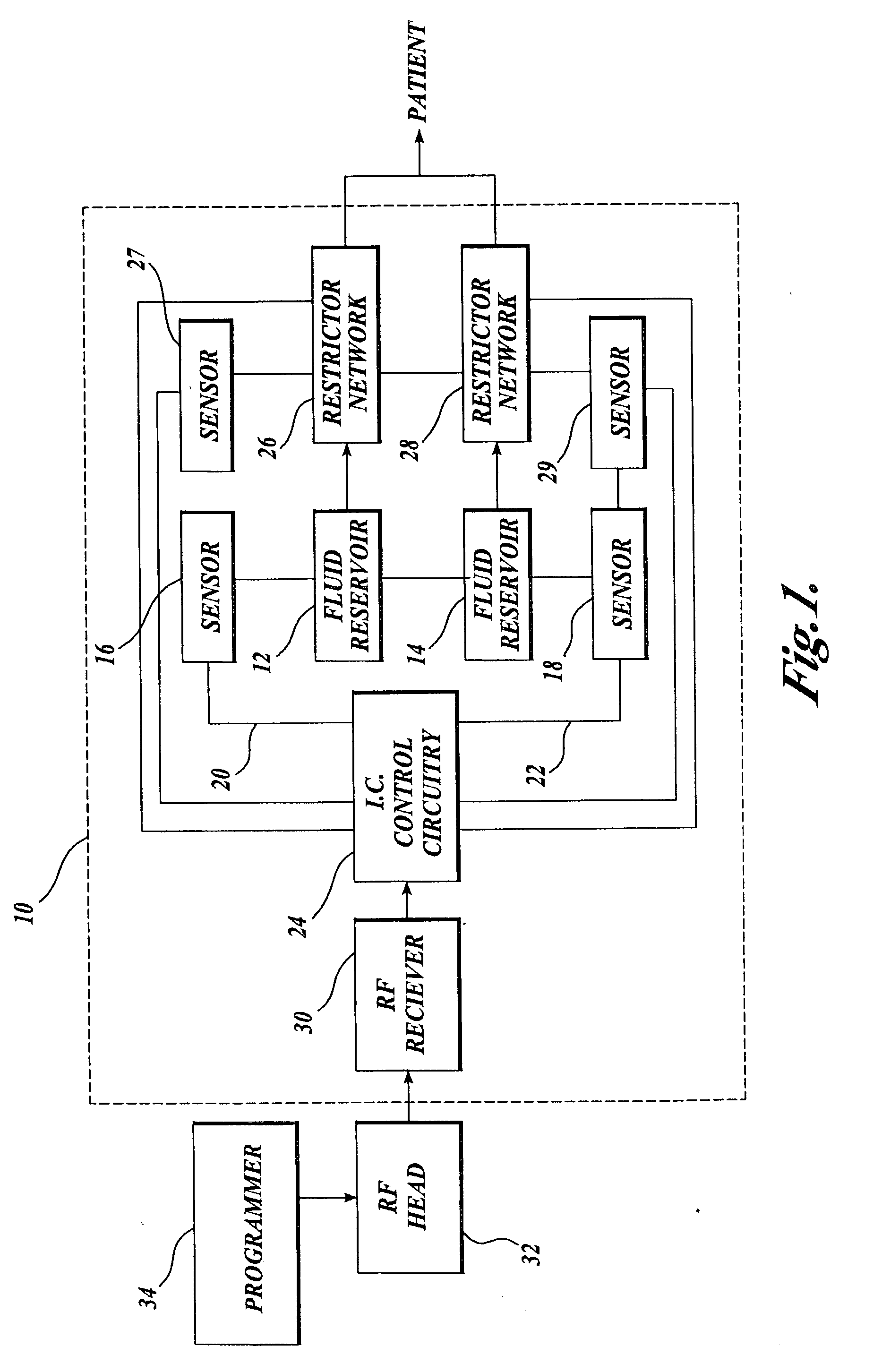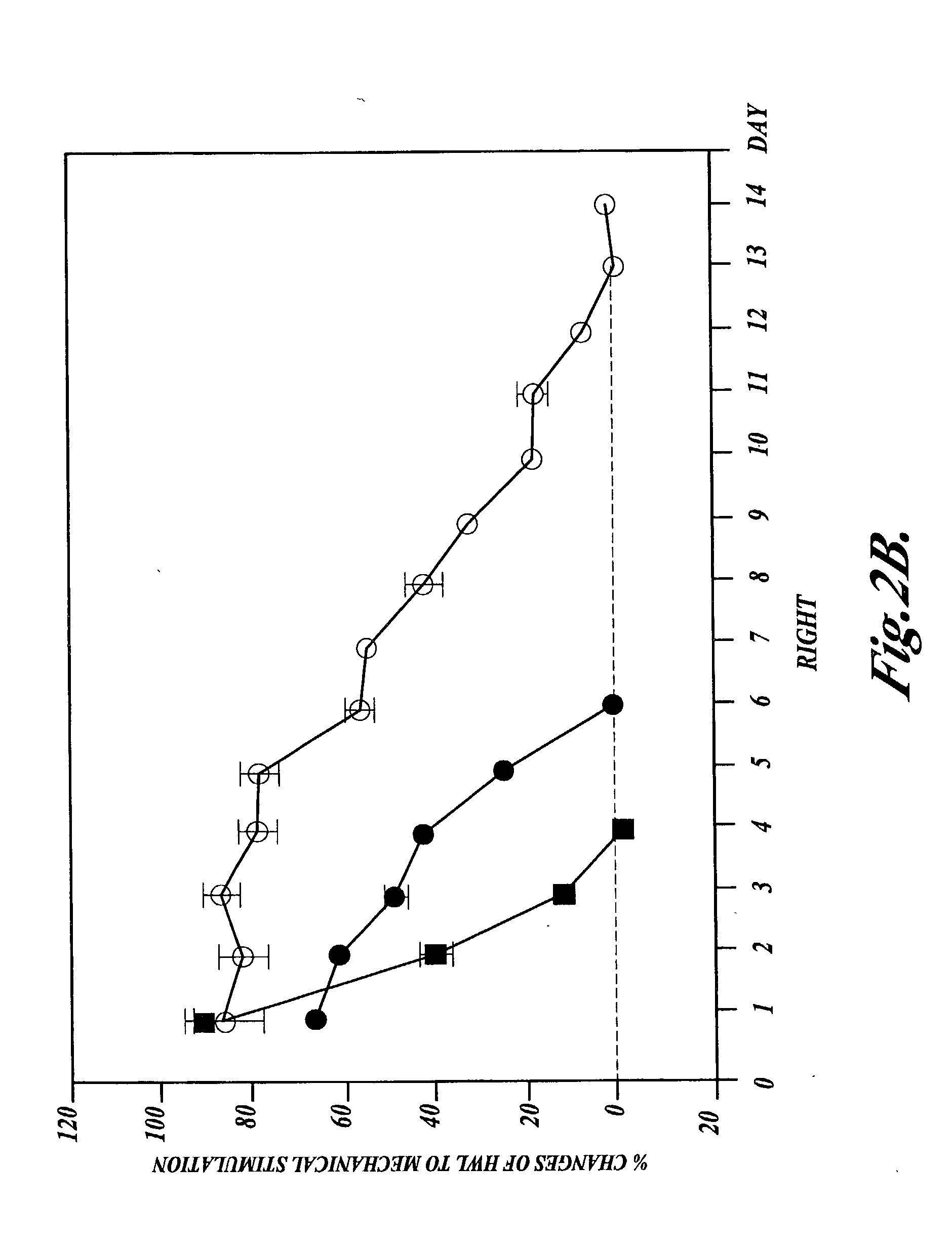Rotational intrathecal analgesia
an analgesia and rotational technology, applied in the field of rotational intrathecal analgesia, can solve problems such as delaying the development of tolerance, and achieve the effects of reducing cyclic amp levels, prolonging pain relief, and delaying the onset of toleran
- Summary
- Abstract
- Description
- Claims
- Application Information
AI Technical Summary
Benefits of technology
Problems solved by technology
Method used
Image
Examples
example 2
Hindpaw Withdrawal Latency (HWL) Tests Using The Materials and Methods of
[0057] Example 1 for both thermal and mechanical stimulation were conducted on a group of eight rats that were treated by intrathecal injections of half-doses of morphine (4 .mu.g) and nociceptin (5 nmol) every 12 hours. The results are shown in the following Table 3 and in FIGS. 3A-3D.
3TABLE 3 % Changes of HWL Thermal Stimulation Mechanical Stimulation Day Left Right Left Right 1 43.31 .+-. 11.50 45.53 .+-. 10.33 35.17 .+-. 7.78 51.31 .+-. 20.07 2 41.28 .+-. 9.90 43.02 .+-. 14.04 33.12 .+-. 11.45 25.68 .+-. 17.32 3 38.53 .+-. 10.09 50.78 .+-. 14.80 35.90 .+-. 10.13 39.65 .+-. 16.61 4 30.32 .+-. 4.71 25.96 .+-. 6.96 11.68 .+-. 6.88 17.95 .+-. 8.54 5 21.63 .+-. 2.40 12.59 .+-. 6.18 3.52 .+-. 5.26 12.55 .+-. 8.98 6 6.40 .+-. 8.23 9.78 .+-. 6.65 11.19 .+-. 11.37 10.36 .+-. 3.75 7 7.14 .+-. 6.54 7.52 .+-. 15.23 6.16 .+-. 7.97 3.66 .+-. 6.27
[0058] Interestingly, by combining half-doses of intrathecal (IT) morphine a...
example 3
Human Study
[0059] A test panel of five adult male humans suffering from high levels of chronic pain is treated by intrathecally administering 3 mg / day of morphine for a period of 7 days. On days 8 through 14,administration of the morphine is stopped and instead the panel is treated by intrathecal administration of 30 .mu.g / day of nociceptin. On days 15 through 196, the treatment regimen of days 1 through 14 is repeated, rotating between intrathecal administration of morphine and nociceptin. Throughout the 196-day treatment regimen, a substantial reduction is obtained in the levels of experienced pain without significant tolerance development to either the morphine or nociceptin drugs.
[0060] In summary, rapid tolerance occurs to intrathecal morphine and very rapid tolerance occurs to intrathecal nociceptin. By rotating the intrathecal dosing of these agents in accordance with the present invention, the length of time to tolerance development is dramatically increased compared to each...
PUM
| Property | Measurement | Unit |
|---|---|---|
| time | aaaaa | aaaaa |
| weight | aaaaa | aaaaa |
| volume | aaaaa | aaaaa |
Abstract
Description
Claims
Application Information
 Login to View More
Login to View More - R&D
- Intellectual Property
- Life Sciences
- Materials
- Tech Scout
- Unparalleled Data Quality
- Higher Quality Content
- 60% Fewer Hallucinations
Browse by: Latest US Patents, China's latest patents, Technical Efficacy Thesaurus, Application Domain, Technology Topic, Popular Technical Reports.
© 2025 PatSnap. All rights reserved.Legal|Privacy policy|Modern Slavery Act Transparency Statement|Sitemap|About US| Contact US: help@patsnap.com



